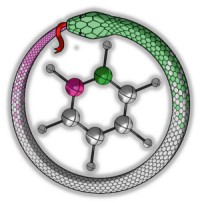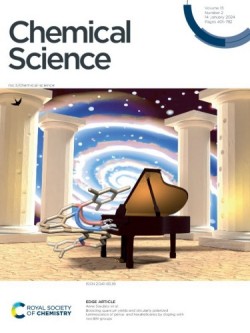Staubitz Group
Research
BN Chemistry
When two carbon atoms in a compound are replaced by a boron and a nitrogen atom, isoelectronic compounds are obtained: This substitution maintains the same total number of electrons as the all-carbon parent compound, as boron (with three valence electrons) and nitrogen (with five valence electrons) together contribute eight electrons, equivalent to the two replaced carbon atoms (each with four valence electrons).
In our group, we are primarily interested in aromatic BN compounds, particularly in anulated polyaromatic BN hydrocarbons. This is because the electronic properties of BN-substituted compounds differ significantly from their all-carbon analogues due to the polarised nature of the B-N bond. Unlike the nonpolar C-C bonds, the B-N unit introduces local dipoles owing to the electronegativity difference between boron and nitrogen.
Azaborinine – Die Hybride aus Benzol und BorazinY. Appiarius, A. Staubitz, Chem. Unserer Zeit 2022, 57, 180-190. |

|
In UV-visible spectroscopy, BN-substituted compounds typically show strongly shifted absorption bands compared to their carbon analogues and in many cases, a distinct solvatochromism is visible. The fluorescence properties of BN-aromatic compounds are particularly interesting from both a fundamental and practical perspective. These compounds often exhibit enhanced fluorescence quantum yields compared to their carbon counterparts. The rigid structure combined with the polarised B-N bond typically results in: Larger Stokes shifts (the difference between absorption and emission wavelengths), higher photostability, more efficient emission processes and reduced self-quenching effects.
These characteristics make BN-aromatic compounds particularly valuable for applications in biological imaging, organic light-emitting diodes (OLEDs), and other optoelectronic devices. The ability to fine-tune these properties through strategic positioning of the B-N units within the molecular framework provides an additional tool for designing compounds with specific photophysical properties.
Our group investigates several aspects of BN chemistry:
- New synthetic avenues for BN compounds to establish new routes to yet unknown heterocyclic motifs or BN isomers.
- Syntheses of BN compounds and their exact carbon analogs to elucidate the precise influence of the BN substitution.
- Synthesis of chiral BN compounds as targets for circularly polarised luminescence (CPL)
- Synthesis of BN comounds with low S1-T1 gaps which are suitable for thermally activated delayed fluorescence (TADF)
Most important recent publications:
Boosting Quantum Yields and Circularly Polarized Luminescence of Penta- and Hexahelicenes by Doping with Two BN GroupsY. Appiarius, S. Míguez-Lago, P. Puylaert, N. Wolf, S. Kumar, M. Molkenthin, D. Miguel, T. Neudecker, M. Juríček, A. G. Campaña, A. Staubitz, Chem. Sci. 2024, 15, 466-476. Abstract: The incorporation of boron–nitrogen (BN) units into polycyclic aromatic hydrocarbons (PAHs) as an isoelectronic replacement of two carbon atoms can significantly improve their optical properties, while the geometries are mostly retained. We report the first non-π-extended penta- and hexahelicenes comprising two aromatic 1,2-azaborinine rings. Comparing them with their all-carbon analogs regarding structural, spectral and (chir)optical properties allowed us to quantify the impact of the heteroatoms. In particular, BN-hexahelicene BN[6] exhibited a crystal structure congruent with its analog CC[6], but displayed a fivefold higher fluorescence quantum yield (φfl = 0.17) and an outstanding luminescence dissymmetry factor (|glum| = 1.33 × 10−2). Such an unusual magnification of both properties at the same time makes BN-helicenes suitable candidates as circularly polarized luminescence emitters for applications in materials science. |

|
Tuning the Aggregation Behaviour of BN-Coronene Diimides with the Imide Substituents and their Performance in Devices (OLED, OFET)J. Hoffmann, B. Geffroy, E. Jaques, M. Hissler, A. Staubitz, J. Mater. Chem. C. 2021, 9, 14720-14729. Abstract: Compared to perylene diimides (PDIs), coronene diimides (CDIs), which can be viewed as a lateral core extension, show undesired effects for optoelectronic devices such as the decrease of the absorption and a hypsochromic shift. Here, we demonstrate that, if the core is extended with two BN units as opposed to two CC units, the opposite is true: large bathochromic shifts can be achieved, together with higher molar extinction coefficients and beneficial luminescence properties, e.g. small Stokes shifts and high quantum yields (φlum > 94%). These effects can be explained by the influence of the BN-unit on the frontier molecular orbitals of the BNCDIs. Different substitution motifs at the imide position, cyclohexyl and 2,6-diisopropylphenyl, although they had no influence on the optical properties on a single molecule level, influenced the aggregation substantially so that the optical properties in the solid state and the performance in organic devices (OLEDs and OFETs) differed considerably. In combination with host matrices, devices with EQEs of up to 1.5% and white light emission (0.317; 0.346) were obtained. The developed synthetic route starting from a regioisomeric pure 1,7-substituted PDI leads to BNCDIs in good yields, which makes this class of compounds very promising. |

|